Climate Tipping Points Are Closer Than Once Thought
Exceeding 1.5 degrees Celsius of global warming could trigger several and lead to irreversible climate impacts.
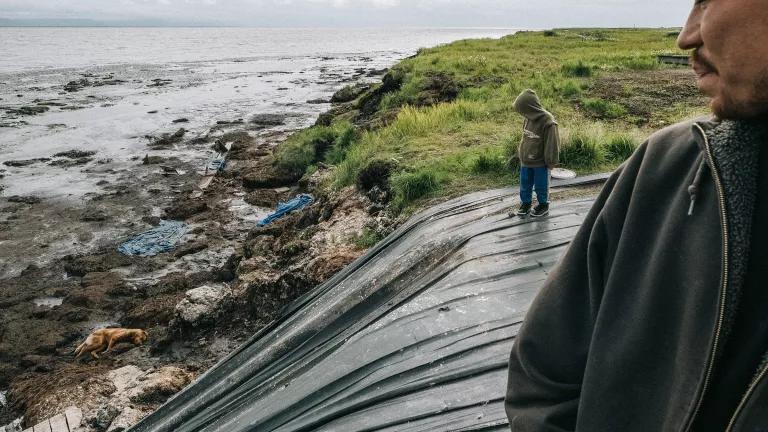
Nathan Tom and his son walking along the coastline in Newtok, Alaska, where the thawing permafrost, regular floods, and coastal erosion make it dangerous for them to remain in their village
Vlad Sokhin/Panos Pictures/Redux
We often think of global warming as being linear: Emit too much carbon and the planet’s thermostat goes up proportionally. And, while this is generally true, the resulting climate consequences—like severe drought—don’t necessarily follow that track. In other words, 10 percent more CO2 doesn't just equal 10 percent more impact.
The more complex reality is that the cumulative effects of continued greenhouse gas emissions could potentially trigger what scientists refer to as climate tipping points. These are critical thresholds that, once crossed, tip a natural system into an entirely different state and lead to potentially irreversible, catastrophic impacts for the planet—including more warming.
The Intergovernmental Panel on Climate Change (IPCC) notes that more than a dozen natural systems—from ice sheets to the Amazon rainforest—are at risk of “tipping.” And although the actual tipping process could take years or even many centuries, it’s possible that once a threshold is passed, the shift is, essentially, a done deal—even if emissions are halted or reversed. In the case of the Amazon rainforest, for example, hitting a climate tipping point, particularly in the face of continued deforestation, could eventually turn the tropical forest into an arid savannah. “Whether it’s a vast carbon store—like the Amazon or the boreal—or other critical natural systems, we must work to keep them as resilient as possible to a changing climate,” says Jennifer Skene, natural climate solutions policy manager at NRDC. “Their protection should be the focus at the local, national, and international level.”
This approach rings essential in the face of a growing body of evidence that suggests we’re much closer to these planetary points of no return than once thought. Here’s what that means.
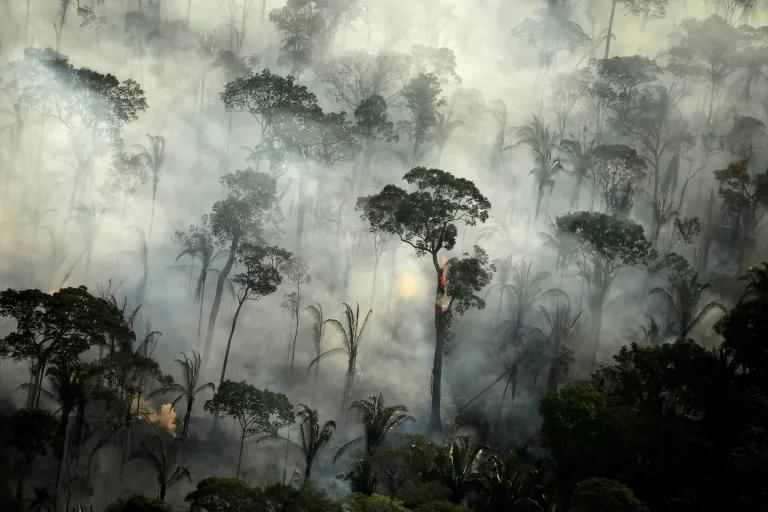
Smoke from a fire in the Amazon rainforest near Porto Velho, Rondonia State, September 2019
Bruno Kelly/Reuters
Why are scientists increasingly concerned about climate tipping points?
There are still many unknowns, but improved climate modeling and new observations create a clearer picture than we’ve had before. Most recently, a 2022 study published in Science concluded that we may have already crossed some tipping point thresholds with the 1.1 degrees Celsius of global warming that humans have caused so far. More will become likely if we surpass the 1.5-degree threshold. That’s a significant update to a prior assessment, which suggested we would need to hit 2 degrees Celsius before reaching this state.
Even the latest IPCC report, which has historically taken a more cautious view, warns that certain global tipping points could be triggered by emissions trajectories currently predicted as “very likely.” And the warmer it gets, the more probable triggering these tipping points becomes.

Local government employees painting the rooftop of a home with solar reflective paint to create a cool roof in Ahmedabad, India
Prima Madan/NRDC
Can anything actually be done to avoid tipping points?
Some impacts may now be inevitable, but we can still take steps to avoid further accelerating the consequences of the tipping points we have likely passed or will pass. That’s why it’s crucial we prioritize and ramp up climate mitigation and climate adaptation.
On the mitigation front, it means doing all we can to limit global warming to no more than 1.5 degrees Celsius, which will require transformative global shifts led by the developed countries responsible for the majority of historical emissions. On the adaptation front, that means actively preparing for climate impacts coming down the pike and prioritizing resources for already-vulnerable communities.
The bottom line? We can still hasten positive change, like the use of renewables, which have already crossed a “mass adoption” threshold in 87 countries. So tipping points should only drive us to press for greater action—not to throw our hands up.
So what happens if some of the most likely tipping points play out?
Scientists are still working to better model how natural systems may suddenly tip in response to global warming, but below are some of the scenarios that keep them up at night.
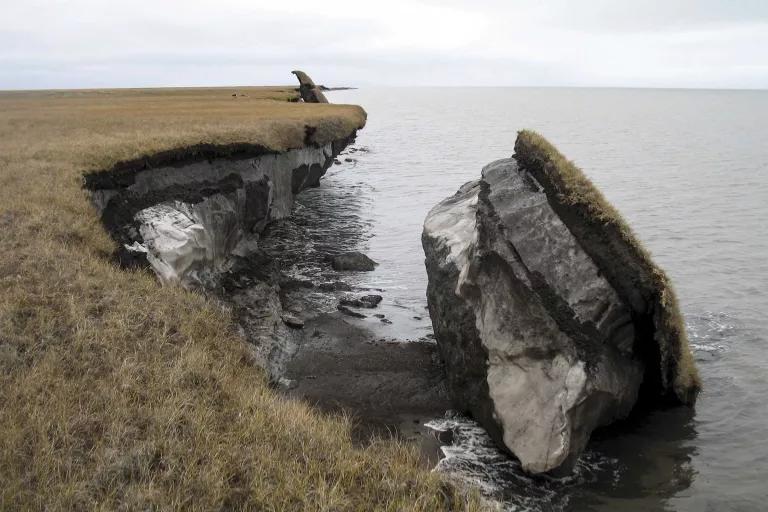
Ice-rich permafrost visible after a portion of coastal tundra collapsed on Drew Point, Alaska
USGS
The thawing of permafrost
Permafrost is the slab of frozen-solid soil that sits just below the surface across a quarter of the Northern hemisphere’s land, in Arctic and sub-Arctic regions of Alaska, Russia, and Canada. The icy layer acts as a built-in freezer, preserving carbon-rich organic matter that would otherwise decay. As a result, permafrost holds about twice as much carbon as currently exists in the atmosphere.
But as the planet heats up, that soil thaws, releasing carbon dioxide and methane in the process. This could further speed up global warming and permafrost thawing, creating what’s known as a positive feedback loop. Evidence of that is already visible. Without the structural integrity provided by permafrost, there have been reports of hillsides literally slumping over, increased mudslides and rockslides, and the appearance of “thermokarst” lakes. In other cases, lakes that sat atop the ice are draining into newly thawed soil and shrinking or drying up entirely. Together, these changes could disrupt infrastructure, ecosystems, and drinking water sources.
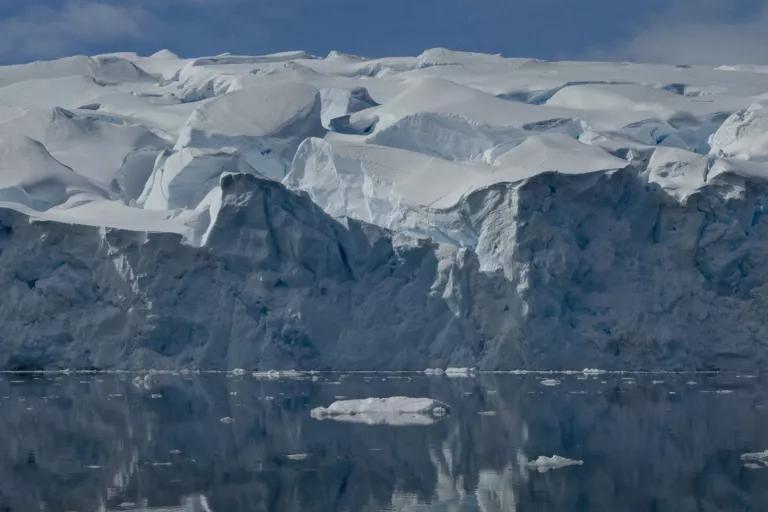
Thwaites Glacier, Antarctica
International Thwaites Glacier Collaboration
Antarctica’s melting ice sheet
The vast, 80-mile-wide Thwaites Glacier is located in West Antarctica. Unlike other glaciers that sit on land, Thwaites is anchored to the sea floor, while its ice shelf juts out over the seabed. The ice shelf acts like a cork, holding back the glacier and slowing the pace at which it slides into the ocean.
The problem is that increasingly warm ocean waters are melting the Thwaites Glacier from below, weakening its structural integrity and speeding up its destabilization. Consequently, recent research also suggests that its ice shelf could shatter in as little as five years. Without it, the Thwaites Glacier’s slide into the ocean will accelerate and cause global sea level rise that impacts millions of people. (Hence, the nickname “Doomsday Glacier.”) That, in turn, would further weaken the rest of the West Antarctic Ice Sheet, whose ice shelves are already melting at previously unthinkable rates. Part of this may be because, according to the Science study, “observations have revealed that parts of the West Antarctic Ice Sheet may have already passed a tipping point.”
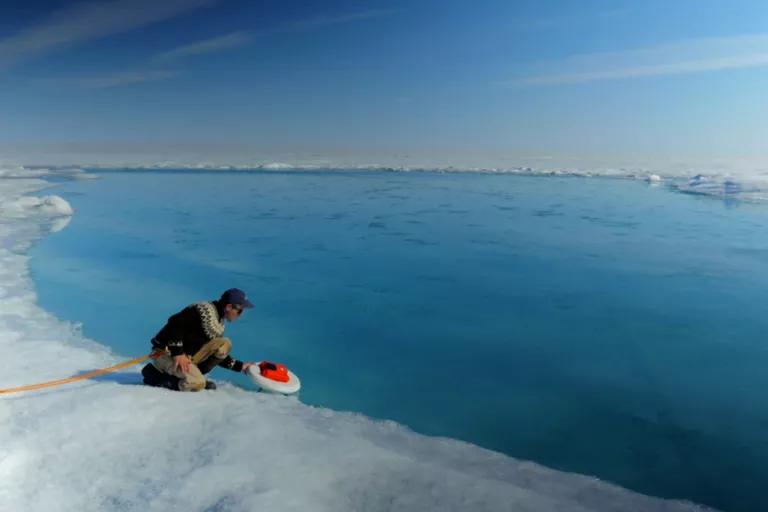
Deploying an autonomous drift boat in a meltwater river on the surface of the Greenland ice sheet
NASA/Goddard/Jefferson Beck via Flickr (CC BY 4.0)
Greenland’s melting ice sheet
This mile-deep ice sheet is draped over about 80 percent of Greenland’s surface. It’s also the single-largest source of current global sea level rise.
During increasingly warm summers, scientists have witnessed the ice sheet get progressively thinner and the glaciers near its edges retreat, pouring more freshwater and chunks of ice into the ocean. What’s worse: As melting ice and snow run downhill into the ocean, the darker ice underneath becomes exposed. That exposure has created a positive feedback loop, where the darker ice absorbs more heat, which leads to more melting. Melting also reduces the ice sheet’s height, so that more of its surface is affected by warmer air at lower altitudes.
Even if emissions were halted today, 10 inches of sea level rise from Greenland’s melting has likely already been locked in. But if emissions continue as usual, self-sustaining feedback loops could send the ice sheet barreling past its tipping point. That could eventually melt it entirely and lead to long-term global consequences, like rising sea levels that could eventually redraw coastal maps.
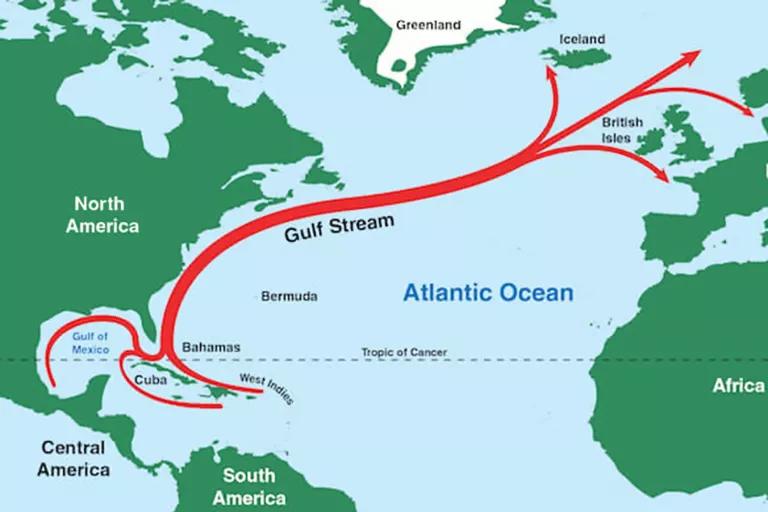
Path of the Gulf Stream
NOAA
The weakening of the Gulf Stream
Oceans are shaped by currents, which act as powerful underwater conveyor belts that help transport heat and regulate global weather patterns. In particular, the “Atlantic Meridional Overturning Circulation” (AMOC), a global system of currents that includes the Gulf Stream, carries warm water northward from the Gulf of Mexico, alongside the United States’ northeast coast, and toward Greenland and Iceland. On its way, the water cools and some of it evaporates, increasing its concentration of salt. By the time the water runs into the icy coast of Greenland, it’s heavy, cold, and salty enough to sink to the bottom and slowly spread back southward, marking the completion of its circuit. This process affects everything from temperatures to rainfall over large parts of the world.
But what happens when the planet heats up and sends freshwater from melting ice into the Atlantic Ocean? The northern water may no longer be salty enough to sink and complete its circuit, potentially slowing down or even stopping the flow of the AMOC altogether. Temperatures and precipitation patterns could dramatically change, risking agricultural seasons and ecosystems. Even marine life could be affected. While the IPCC says that a complete collapse of the AMOC this century is very unlikely, new evidence suggests the current is already at its weakest state in more than 1,000 years.

Old-growth trees in the boreal forest near Dryden, Ontario, Canada
River Jordan for NRDC
Dieback of boreal forests
The coniferous crown of the Northern Hemisphere, the boreal forest spans North America, Scandinavia, Russia, and parts of China, and is the most carbon-dense terrestrial ecosystem, storing as much as 40 percent of the world’s land-based carbon in its trees, vegetation, and soil. But this massive carbon storehouse is now at risk of becoming a massive carbon source, due to both climate change and unsustainable industrial development.
Climate change is exacerbating both drier and warmer conditions, which can fuel more frequent and farther-reaching wildfires that release massive amounts of the boreal’s stored carbon and melt its carbon-storing permafrost. While fires are natural and common in the boreal, and even essential to the ecosystem, back-to-back runaway wildfire seasons, along with increased insect infestations, are driving the boreal beyond its natural state. Plus, the clearcutting of more than 1.3 million acres of the Canadian boreal each year only makes it worse by releasing even more carbon emissions, further weakening the forest’s resilience to climate impacts and exacerbating the impact of changing temperatures. Ultimately, all of this risks permanently transforming the boreal from a vast landscape of old-growth conifers into a shrubby grassland.
Dieback of the Amazon
The Amazon rainforest, a famously wet ecosystem, holds an estimated 150 to 200 billion metric tons of carbon in its diverse plant life, or about a quarter of all the carbon stored on land.
But climate change has led to unprecedented drought and extended the dry season. That has impacted the growth of some trees and killed others, causing the release of their stored carbon. Deforestation, too, is changing precipitation patterns. With fewer trees to soak up water and breathe it back out, the rainforest becomes even warmer and drier. The soil also dries and the risk of fire goes up. If a tipping point is reached where the Amazon’s precipitation patterns change too drastically to support its flora and fauna, and the rainforest’s resilience is too compromised from deforestation, it could eventually transform from a diverse tropical rainforest into a savannah.
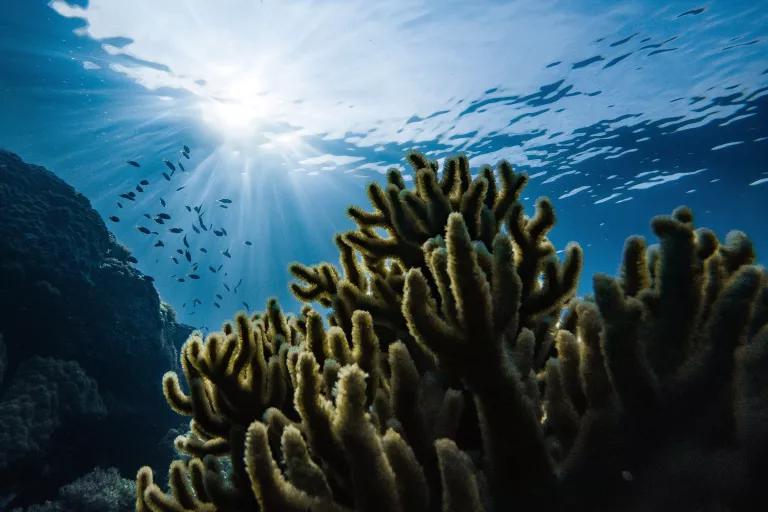
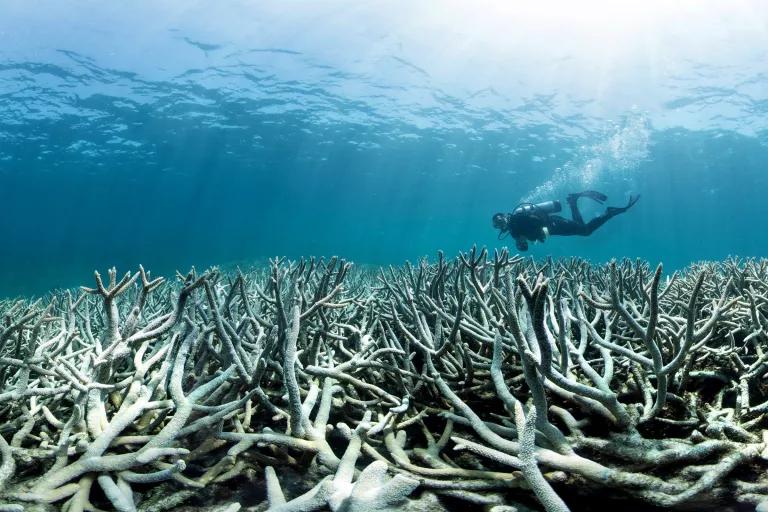
The Ocean Agency/Caitlin Sea Survey, CC BY 4.0
The collapse of coral reefs
These ecosystems support a higher density of species than any other marine habitat, and many of those species are endemic, meaning they can only be found in that location. They also absorb more than 90 percent of wave energy, acting as a buffer for sensitive coastal ecosystems and communities.
Unfortunately, the ocean absorbs more than 90 percent of the excess heat caused by global warming. For coral that’s evolved to live within narrow temperature bands, even short-lived temperature spikes can turn deadly. “When water temperatures exceed a certain threshold, coral irreversibly expel their symbiotic algae, resulting in coral bleaching and triggering coral death,” according to the Science study. That’s what happened in 2016 when a marine heat wave wiped out a third of the Great Barrier Reef’s coral.
Oceans also absorb a large amount of carbon dioxide, which, over time, raises the ocean’s acidity. Since coral is made of pH-sensitive calcium carbonate, this acidification can render the ocean inhospitable. Even if warming is kept to 1.5 degrees Celsius, the IPCC estimates that as much as 90 percent of all warmwater coral reefs will still die off. If the temperature creeps higher, it’s likely to mark the first-ever man-made extinction of an entire ecosystem.
Of course, it doesn’t have to go this way. We have the tools to limit some of the potential damage and, for now, we still have time.
This NRDC.org story is available for online republication by news media outlets or nonprofits under these conditions: The writer(s) must be credited with a byline; you must note prominently that the story was originally published by NRDC.org and link to the original; the story cannot be edited (beyond simple things such as grammar); you can’t resell the story in any form or grant republishing rights to other outlets; you can’t republish our material wholesale or automatically—you need to select stories individually; you can’t republish the photos or graphics on our site without specific permission; you should drop us a note to let us know when you’ve used one of our stories.

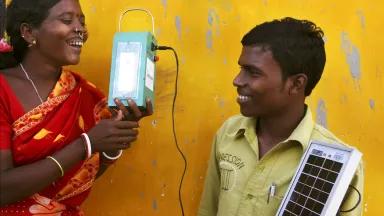


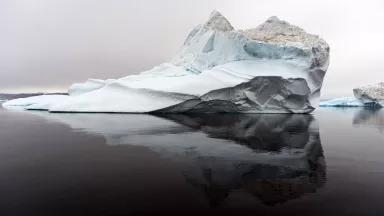

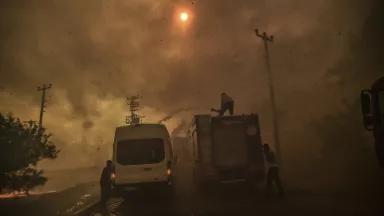
What Is Climate Feminism?
What Are the Effects of Climate Change?
Climate Migration and Equity
What Is Climate Feminism?
What Are the Effects of Climate Change?
Climate Migration and Equity
What Is Climate Feminism?
What Are the Effects of Climate Change?
Climate Migration and Equity
What Is Climate Feminism?
What Are the Effects of Climate Change?